2018 MailChimp Statistics for Successful Email Marketing Campaigns
Email marketing is still the best tool to attract leads, convert them to customers and increase sales.
MailChimp is one of the leading email provider. MailChimp’s researchers are constantly analyzing data to help you make the most of your marketing campaigns.
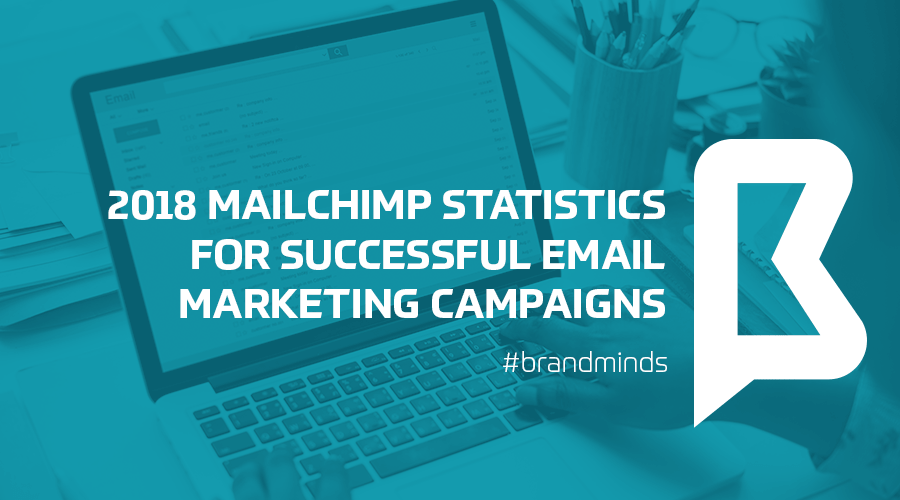
We put together a list of 2018 statistics we found in MailChimp reports.

You can use this knowledge to turn your email marketing campaigns into a successful tool:
1. Smartphone subscriptions and traffic per phone will have respective annual growth rates of 15% and 25% until 2020.
2. Mobile Use has a negative impact on Email Engagement: readers click less on mobile:
- PCs, tablets, and mobile devices accounted for 64%, 9%, and 27% of email addresses;
- PCs, tablets, and mobile devices accounted for 72%, 9%, and 18% of clicks;
- Recipients who use mobile phones had unique and total click rates of 2.7% and 3.9%, worse than all other device categories.
3. Responsive design can improve engagement
Campaigns that use responsive templates have higher click rates in general, but the impact seems to be mixed at the link-depth level.
Only the first 3-5 links typically see a benefit from the use of a responsive template.
4. Segmented campaigns perform better than non-segmented campaign
By narrowing your focus and sending messages to targeted groups within your lists, your recipients will find your campaigns more relevant—and relevant campaigns get better results.
Here are the results of email marketing campaigns using lists segmentation:
Opens: 14.31% higher than non-segmented campaigns;
Unique opens: 10.64% higher than non-segmented campaigns;
Clicks: 100.95% higher than non-segmented campaigns;
Bounces: 4.65% lower than non-segmented campaigns;
Abuse Reports: 3.90% lower than non-segmented campaigns;
Unsubscribes: 9.37% lower than non-segmented campaigns.
There are many types of list segmentation and MailChimp has looked into it.
Segmentation by merge field (“customer_type,” “ZIP code,” or “job_title,” for example):
Opens: 14.06% higher than non-segmented campaigns;
Unique Opens: 9.15% higher than non-segmented campaigns;
Clicks: 54.79% higher than non-segmented campaigns;
Bounces: 0.79% higher than non-segmented campaigns;
Abuse Reports: 3.33% lower than non-segmented campaigns;
Unsubscribes: 7.19% lower than non-segmented campaigns.
Segmentation by Date Added/Signup Date:
Opens: 29.56% higher than non-segmented campaigns;
Unique Opens: 26.86% higher than non-segmented campaigns;
Clicks: 51.64% higher than non-segmented campaigns;
Bounces: 55.18% higher than non-segmented campaigns;
Abuse Reports: 29.55% higher than non-segmented campaigns;
Unsubscribes: 33.76% higher than non-segmented campaigns.
Segmentation by Interest Groups:
Opens: 9.92% higher than non-segmented campaigns;
Unique Opens: 5.54% higher than non-segmented campaigns;
Clicks: 74.53% higher than non-segmented campaigns;
Bounces: 17.61% lower than non-segmented campaigns;
Abuse Reports: 17.78% lower than non-segmented campaigns;
Unsubscribes: 25.65% lower than non-segmented campaigns.
Segmentation by Subscriber Activity:
Opens: 10.44% higher than unsegmented campaigns;
Unique Opens: 12.23% higher than unsegmented campaigns;
Clicks: 15.69% higher than unsegmented campaigns;
Bounces: 9.23% lower than unsegmented campaigns;
Abuse Reports: 10.34% higher than unsegmented campaigns;
Unsubscribes: 5.49% higher than unsegmented campaigns.
5. Subject Line Data: Choose Your Words Wisely
Personalization works
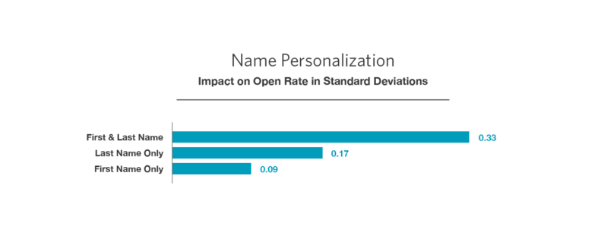
Personalization by industry
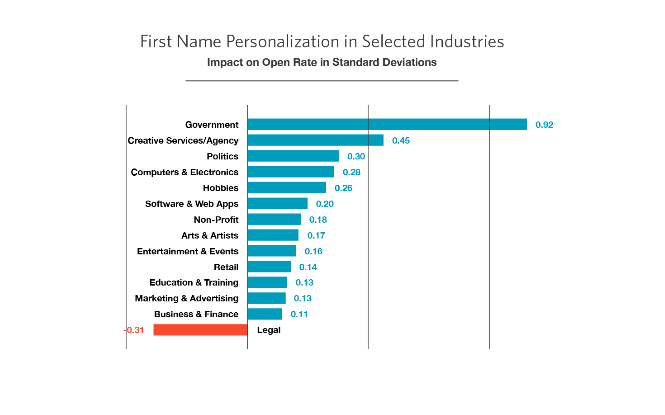
People respond to a sense of urgency or importance
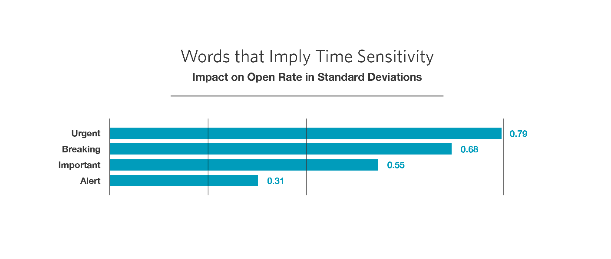
“Free” works but “Freebie” is better
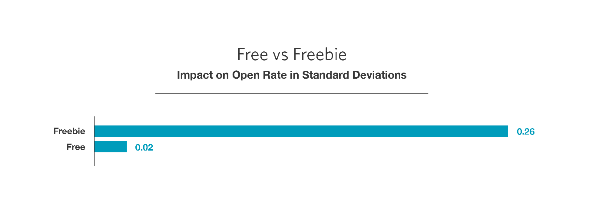
Announcements get opened
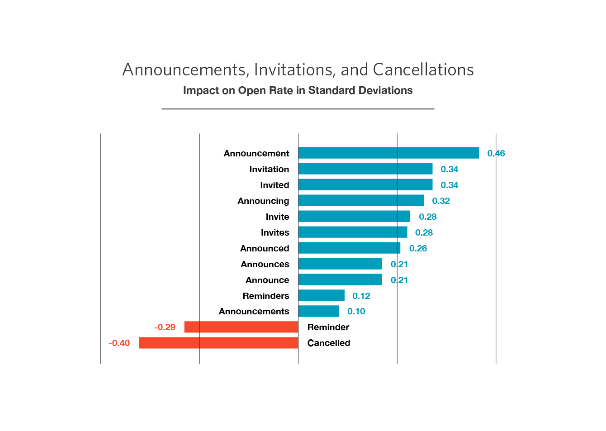
“Helping” instead of “Donate”
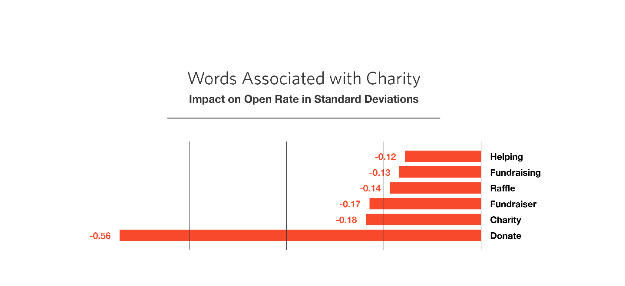
6. The average open rate for all industries is 20.81%
The most opened emails are related to hobbies, with an open rate of 27.35%;
Emails sent by government entities come in second, with a 26.52% open rate;
With a 26.03% open rate, emails about the arts and artists came in third.
7. The average click rate for all industries is 2.43%
Hobbies also have the highest click rate, which is 4.78%;
Media and publishing emails see the second highest click rate, at 4.55%;
Government comes in third, with a 3.65% click rate.
If you are interested in improving your email marketing campaigns, join us at Digitalium, The Hottest Digital Marketing Conference and learn from Kath Pay, Email Marketing Expert.
Stop Making these 5 Email Marketing Mistakes
83% of B2B companies use newsletters as part of their content marketing program (imaginepub.com) and 86% of professionals prefer to use email when communicating for business purposes (hubspot.com).
As these statistics show, email marketing is an important part of B2B marketing strategies.
Are you happy with your email marketing results?
Is it possible your efforts are not paying off as expected because there are mistakes in your email marketing strategy?
5 email marketing mistakes you need to stop making now:
1. Not using responsive design:
[bctt tweet=”80% of users delete emails that are not optimised for mobile devices via @Mapp_Digital” username=”brand_mins”]
It’s 2018. Your clients spend 4 hours on average connected to their smartphones searching the internet, posting on social media, sending Whatsapp messages and reading their emails.
Yes, 55% of all emails are opened on smartphones (source: litmus).
The days of pinch and zoom are long gone: if your website is responsive, your email should be too.
2. Not segmenting your email list
[bctt tweet=”Segmented campaigns had 14% higher open rate and 100% more clicks than non-segmented campaigns via @mailchimp” username=”brand_minds”]
Your clients are not created equal. They have different reasons for signing-up to your newsletter, which means you cannot send the same message to all of them.
Your audience expects personalised messages and we are not talking about addressing them by name. They want to receive email messages that show your company is aware of their interests. So break your email list into various segments and send your recipients messages that illustrate your company is thinking of them.
Here is how you can segment your audience:
- by Zip code;
- by job title;
- by Signup date;
- by interests;
- by subscriber activity.
Segmented email campaigns are more relevant to your audience and relevant campaigns get better results.
3. Sending too much promotional content
No one likes a show-off. Your audience opens your email message expecting to find an answer to the question What’s in it for me? So build your email marketing strategy by highlighting how your products or services help your recipients achieve their goals.
Offer valuable content (ebooks, industry insights, statistics report, how-to videos etc.) and develop a trust-based relationship with your prospects or clients.
[bctt tweet=”86% of consumers would like to receive monthly promotional emails from companies they do business with via @HubSpot” username=”brand_minds”]
Of course they expect to receive promotional content, but not on a daily basis. You need to find the right balance between company-centred content and customer-centred content. Start by using the Pareto law: 80% non-promotional content + 20% promotional content.
Expert’s recommendation
Do you want to turn your leads into paying customers?
Here’s what Cosmin Daraban, marketing expert says you must do:
Follow up immediately with the same offer that made them subscribe to your newsletter. People tend to forget quickly – don’t let them. Match the timing of your message with your qualified lead intention, using auto-responders, segmenting and advanced rules.
Experiment and find out what works for your company.
4. Not using attracting subject lines
[bctt tweet=”68% of email recipients report email as spam based solely on the subject line via @invesp” username=”brand_minds”]
Some entrepreneurs or professionals receive up to 50 email messages a day. They are not going to open all of them because it is time consuming and most are not even relevant. So they decide which emails to open by scanning the subject line. Don’t use:
- Generic subject lines: {your company’s name} Newsletter, Weekly Newsletter, Daily News etc.;
- All caps and punctuation abuse: !!!!
- Words that show exaggerations: Urgent, Exclusive, Revolutionary etc.
When writing your email’s subject line follow these guidelines:
- include the topic of what you’re going to talk about;
- use a human voice;
- use emojis (maximum 2);
- include relevant details.
5. Sending too many email messages
[bctt tweet=”78% of consumers unsubscribe from emails because brands were sending too many emails via @HubSpot” username=”brand_minds”]
Too many entrepreneurs spend their working hours reacting to an overflowing email inbox. In our article 5 time management tips & tricks for entrepreneurs we talk about how checking your email inbox should be a task like any other.
Respect your clients’ time and don’t send them too many email messages.
Allow them to choose how often they want to receive your emails.
The greatest mistakes a brand can make online
Waiting too long to launch a product / service.
Like in a relationship, so it happens in business: the perfect timing is essential. In the desire to be sure everything is perfect, most entrepreneurs or business owners wait too long, therefore missing the right opportunity to launch the business, the service or the product. It’s important not to forget to trust your guts and just go for it.
“Some people are waiting for some magic audience size “1,000 subscribers” or maybe “10,000 visitors” or whatever your number might be. Some people just can’t find the time to blog or podcast or make videos AND to build a product at the same time. It’s tough. Some people simply talk themselves out of creating a product because they’re afraid no one will buy it. They don’t want to fail after putting in so much time creating content. Whatever the reason, this is a fatal trap. If you’re building a business, you need to address the biggest risk head-on. The biggest risk you’ll face as a business is in creating something no one will pay for,” wrote Corbett Barr for fizzle.co.
Not checking and double checking before posting
Still, one must be very careful before sending the message into the world. Each post on social media should be treated with a lot of attention and care, otherwise it may do more harm than good. Often we see big grammar mistakes, pictures that are not doing any favor to the brand, wrong comments or even worse. Even they are taken down afterwards, it might be too late.
Fabricating pieces of news or information
For each brand the trust must be earned. People don’t like to be lied to or be mislead, therefore you must make sure that every piece of information you share with your target is 100 % true. Today, every piece of content is very easily checked by anyone. If you do make a mistake, make sure to apologize for it. Everybody can make mistakes, the important thing is to own it and act accordingly. Your target will understand and respect you. Don’t hide and act like nothing happened or erase the post.
The lack of patience.
Brands are not built overnight. Building an online brand takes patience. It’s something that’s built brick by brick with every tweet, every blog post, and every podcast episode. It’s built with every client one step at a time. One of the biggest mistakes business owners do is thinking that a brand can be build in only 2-3 months online and complaining after this short period of time that they aren’t seeing any traction. In reality, building a brand takes years of hard work, experience, people and investment, so make sure you think of all those aspects prior to starting on this road.
Not being consistent.
You can’t build an online brand without consistently putting a message out there. A social media following is gained in time, after a lot of work on strategy and implementation, an e-commerce business takes months of work prior to launch and after launch, until the first signs of success occur. Time and dedicated teams that are working towards the same purpose, following a strategy based on true insights. Constant content must be sent on regular basis to all the social media platforms of your brand, PR, marketing & sales efforts are also needed. Constant, insightful, creative and powerful messages, perfectly targeted to your interest group or groups. “If you’re having difficulty being consistent with your content creation as you build an online brand, try automating your social media needs and creating an editorial calendar for your site. The more organized you can be the better,” said Amanda Abella, writer and author of “Make Money Your Honey”.
Not putting customer experience first
Customer experience is one of the most important factors in your business, especially today in the world on the Internet and social media frenzy. Since your social interactions are public for everyone to see, your reactivity defines your brand and shows customers how much you care. The more you interact with them and show them your interest in them, the better. Don’t be shy on giving special discounts or mentions on your social media accounts to the people that are loyal to you and choose your brand on a regular basis.
Not really listening to their consumers
And believing that you and your team always know better. It;s important not to forget that from the unhappy consumers or the ones that choose not to buy your product / service in favor of another one, you can learn the most. They are the unbiased ones and their opinion should be treasured. Don’t just pay lip service to your customers. You don’t have all the answers, they do. There’s a reason why “the customer is always right,” because without customers you don’t have a business.
Focusing mostly on acquisition
It takes a lot more effort to attract a new customer than to keep an existing one, so you may want to keep your customers happy. Offer help, give away freebies, or conduct regular surveys to make sure their needs are met.
Here are some of the biggest mistakes in social media, according to Forbes.